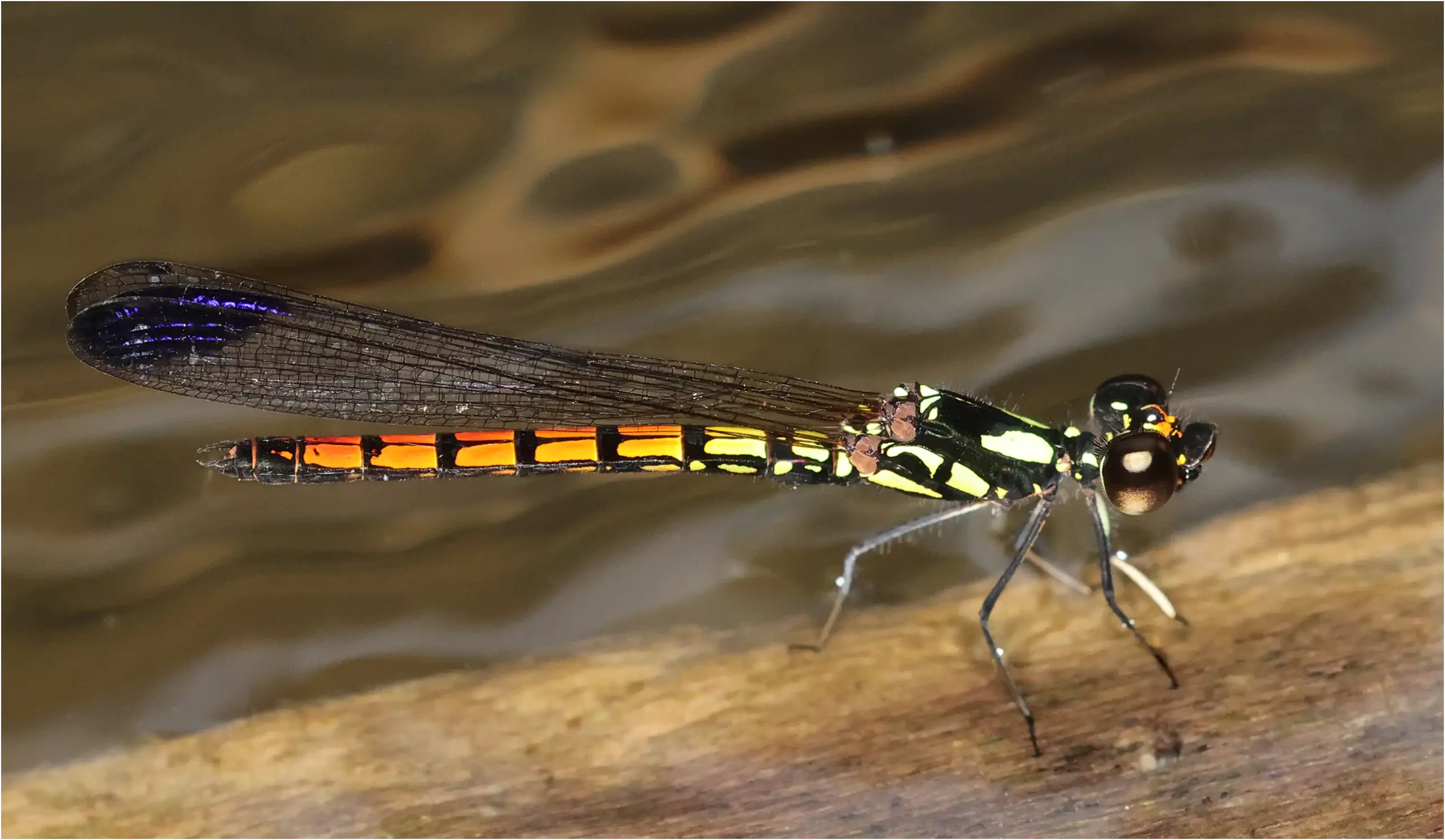
Selys first described Libellago stictica male (Chlorocyphidae) as a supposed race of Micromerus stigmatizans, 1859 (1), then as Micromerus sticticus in 1869 (2). The genus Micromerus is now extinct. It was MA Lieftinck who in this document (3), and adhering to Fraser’s proposal, united all of Selys’ Micromerus in the genus Libellago.
And Selys was not mistaken, Libellago stigmatizans and stictica are indeed very close, but if L. stigmatizans is not present in Borneo, and L. stictica is endemic there.
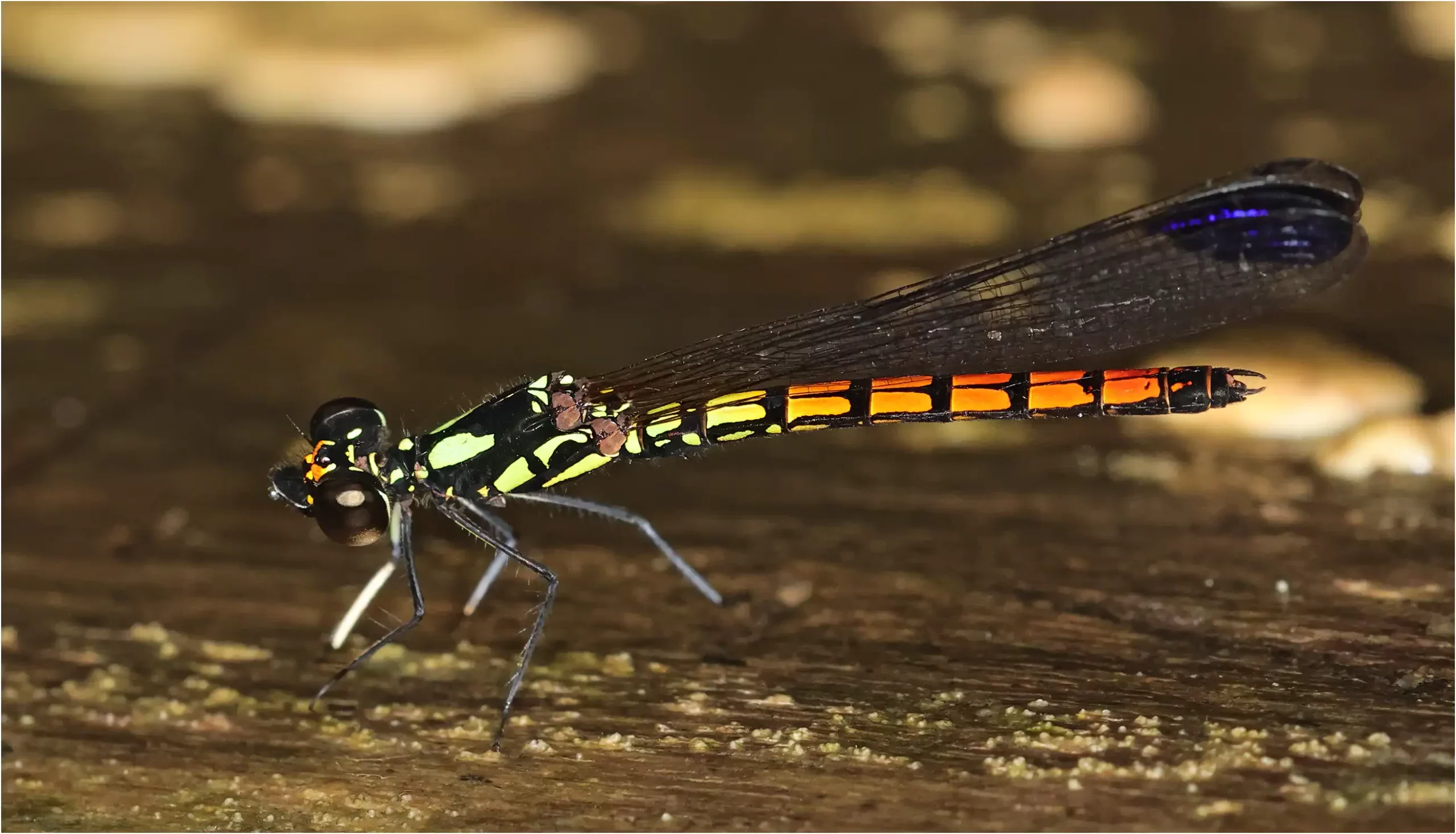
Il est aussi proche de L. lineata (ici au Vietnam) et de L. aurantiaca dont l’abdomen est aussi orange, mais ces deux espèces ne portent que des lignes jaunes sur le thorax et non cette tache en forme de feuille à la partie antérieure (4). Il est aussi légèrement plus grand ; A. G. Orr nous dit que son aile postérieure mesure 17 à 18 mm, aile qui est d’ailleurs bien plus longue que l’abdomen, une des caractéristiques des Chlorocyphidae. L’insecte entier est donc très petit, à peine plus de 25 mm.
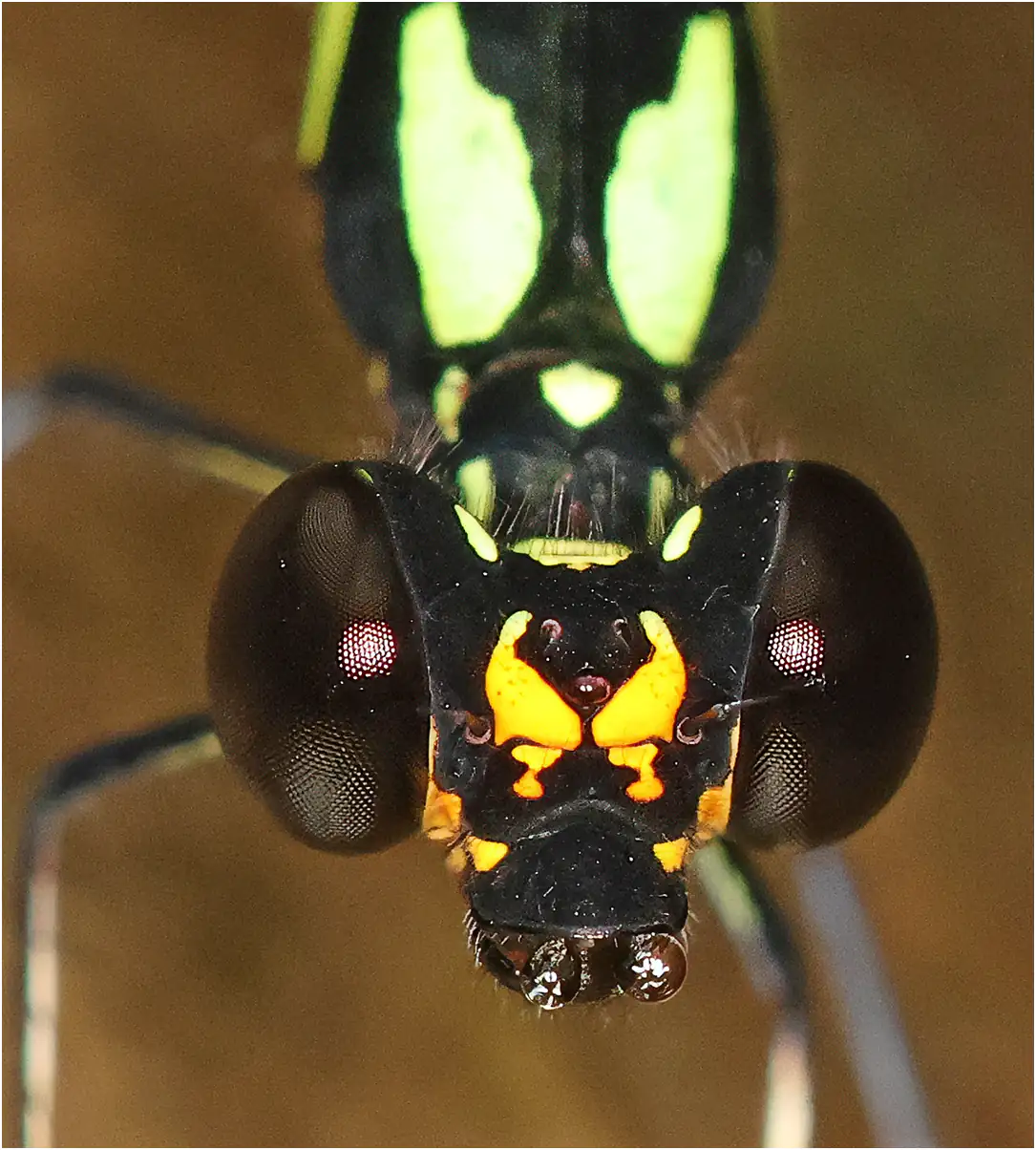
Between the ocelli and the antennae, they have a complex and spectacular pattern, which adds to the singularity of the face.
They inhabit rivers in forests, in plains, and like to establish their territory on the trunks of semi-submerged dead trees on which the females come to lay their eggs. They are aggressive with other males and fight in flight facing each other, exhibiting both the white side of their forelegs and the colored tips of their hindwings. AG Orr writes that they are present for a short time on the breeding sites, about an hour in the afternoon. Ours were early !
Male Libellago stictica, Sarawak, Timuoh River, Annah Rais Hot Spring, 03/24/2025
On this river, they shared the supports with Libellago semiopaca, Heliocypha biseriata, Dyspahea dimidiata and Neurobasis longipes. It is worth noting that this is our seventh day of prospecting and the first day where it has not rained !
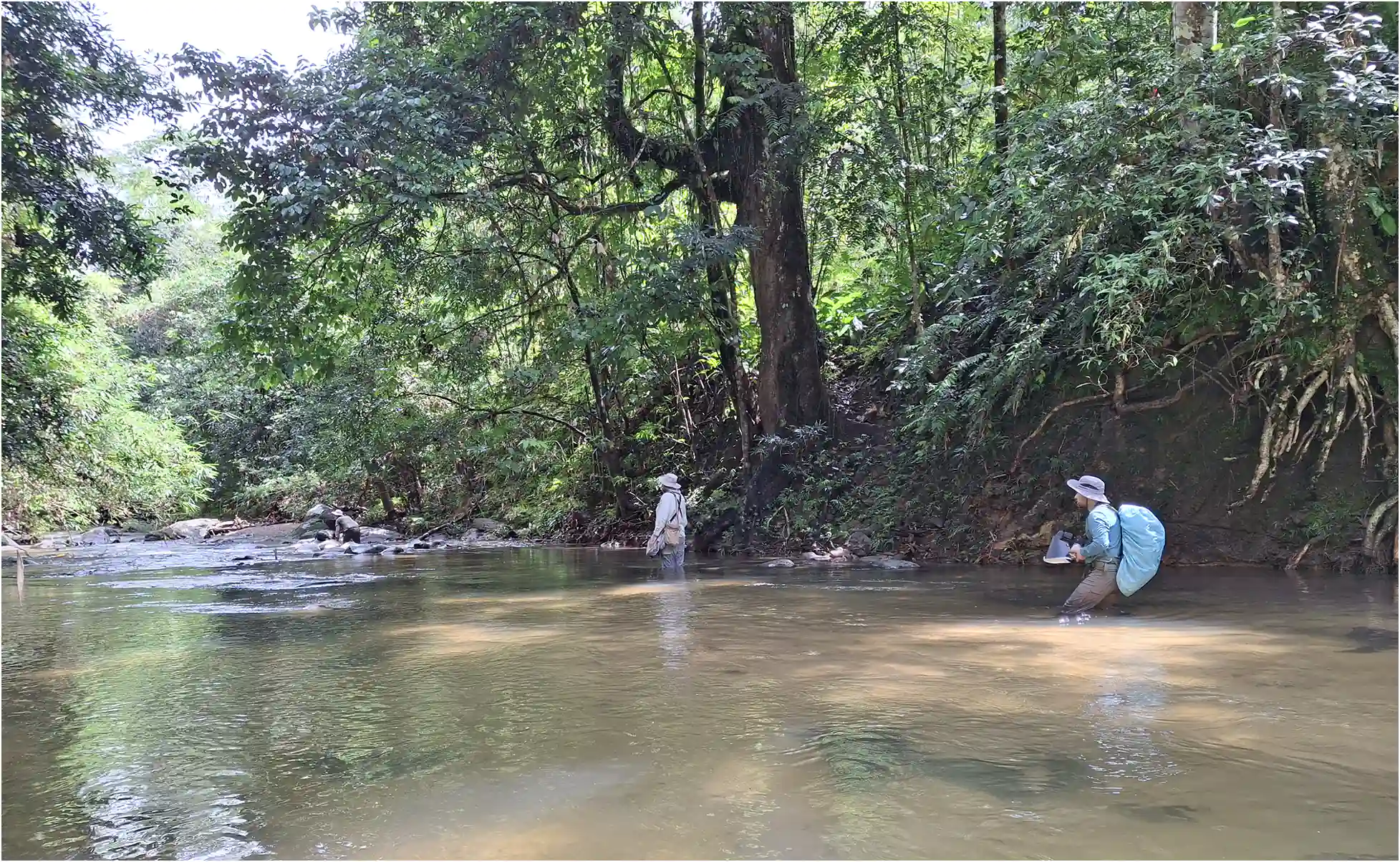
It is rarely encountered, with only three sightings on iNaturalist before our visit.
It is therefore endemic to Borneo, with records from Brunei, Kalimantan, but especially Sarawak, where sighting pressure is certainly higher.
IUCN Red List .
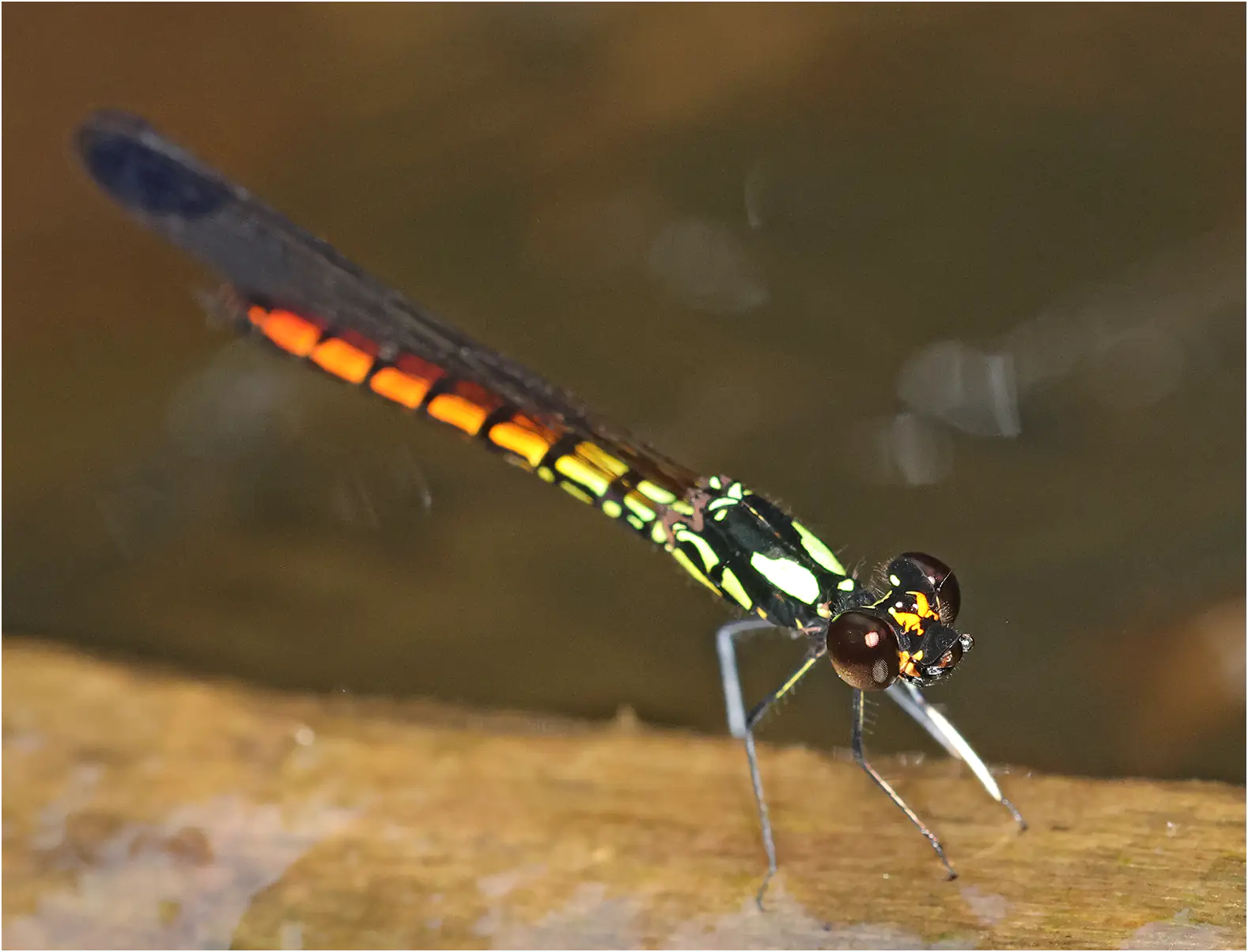

Females laying eggs on dead wood are more easily approached than males; they insert their eggs into the decaying wood, in the submerged parts of it, resisting the sensitive current.
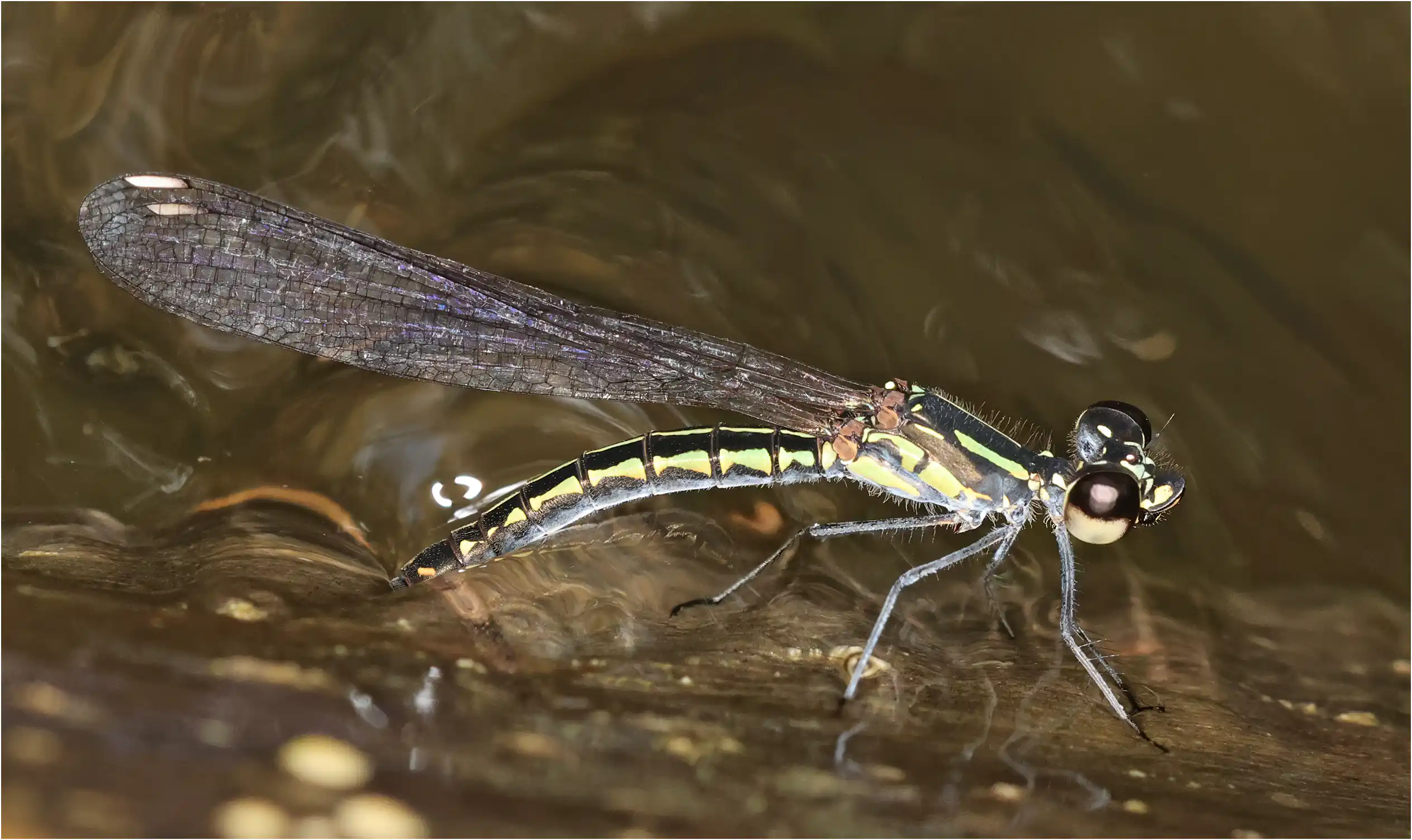
They are very spectacular with their massive abdomen. Note that it does not have the leaf-shaped decoration on the thorax, but identification was easy, as the males constantly landed right next to them.
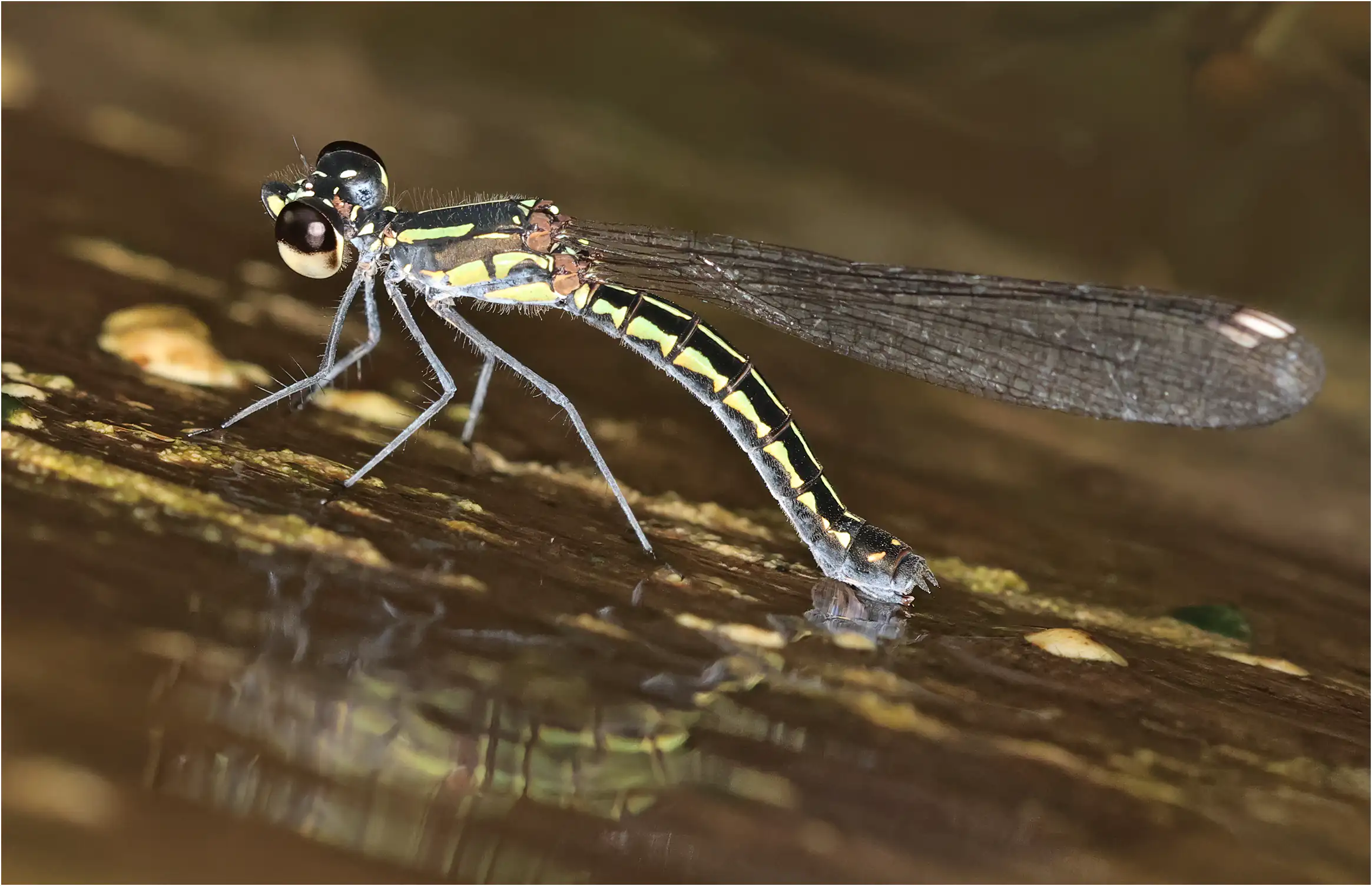
Etymology
Libellago ; the genus was created by Selys in 1840 and is thought (5) to be formed from the Latin libellula for dragonfly and –ago , a suffix derived from virago, which in Latin means “woman strong and courageous like a man” and therefore possibly heroine. This is the explanation given by Ngiam and Ng, but should we not simply stop at the meaning of the suffix -ago in Latin (6) which means to lead, in the sense of directing. Why does Selys give this quality to this genus is a mystery.
Stictica , from the Greek stiktos for marked, tattooed ; Selys in his “Additions to the Synopsis of the Calopterygines” writes: « Race ? Un exemplaire de Bornéo (même collection) a des taches jaunes aux 6° et 7° segments, et les bandes latérales jaunes du thorax sont maculaires. Si c’est une espèce, je le nommerai Micromerus sticticus. » – “Race? A specimen from Borneo (same collection) has yellow spots on the 6th and 7th segments, and the yellow lateral bands of the thorax are macular. If it is a species, I will name it Micromerus sticticus. » This is a paragraph from the article in which he describes L. stigmatizans and he notes that this subject differs by yellow spots, which are certainly the origin of the species name.
Note that this species name is also given to a Trithemis (Libellulidae) that I encountered in Namibia. But also to a Pericnemis (Coenagrionidae) and a Phyllopetalia (Austropetaliidae)!
Below, we see, under the ovipositor, the stylet that perforates the rotting wood.
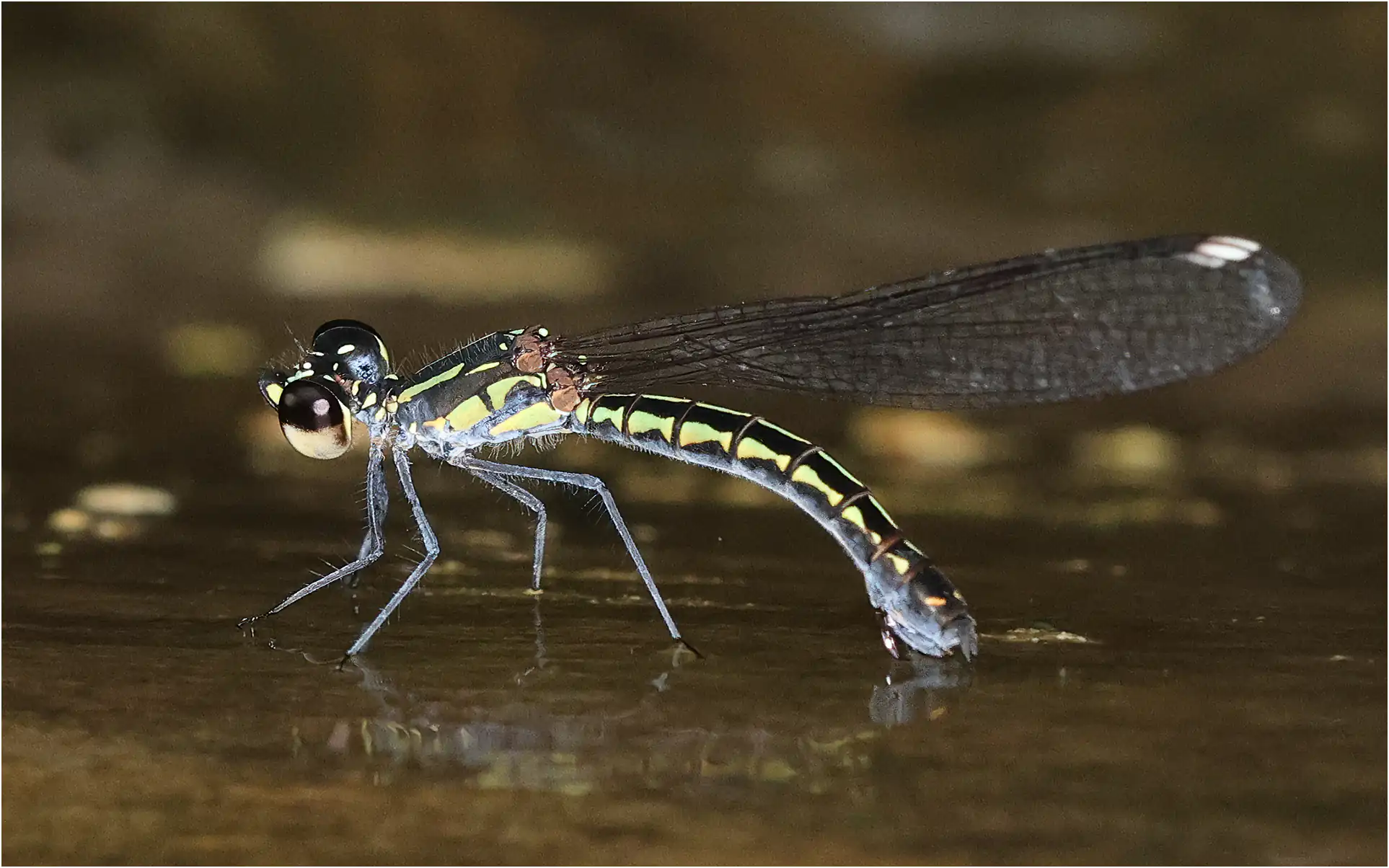
1- Selys, 1859 – Addition au Synopsis des Calopterygines. Bulletins de l’Académie royale des sciences, des lettres et
des beaux-arts de Belgique. P. 448.
2- Selys, 1869 – Secondes additions au Synopsis des Calopterygines – Bulletins de l’Académie royale des sciences, des lettres et
des beaux-arts de Belgique. P. 665
3- Lieftinck, 1932 – Notes on the Genus Libellago Selys, with Descriptions of two new species (Odon.) – Konovia : Vienne.
4- A Guide to the Dragonflies of Borneo, their identification and biology. A.G. Orr, Natural History Publication (Borneo) – 2003.
5- Robin Ngiam & Marcus Ng – A photographic guide to the Dragonflies and Damselflies of Singapore – John Beaufoy Publishing – 2022
6- Dictionary of Word Roots and Combining Form, compiled from the Greek, Latin and other languages with special reference to biological terms and scientific names, Donald J. Borror, 1960.